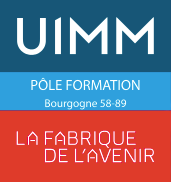style
Lorem ipsum dolor sit amet, consectetur adipiscing elit, sed do eiusmod tempor incididunt ut labore et dolore magna aliqua. Ut enim ad minim veniam, quis nostrud exercitation ullamco laboris nisi ut aliquip ex ea commodo consequat. Duis aute irure dolor in reprehenderit in voluptate velit esse cillum dolore eu fugiat nulla pariatur. Excepteur sint occaecat cupidatat non proident, sunt in culpa qui officia deserunt mollit anim id est laborum.

Promesse lorem ipsum
Colours
Bleu
#131051Bleu clair
#0F9DD7vert
#005677
Measures
- Small
- Medium
- Large
- One
- Responsive
Fonts
Primary Font: "Proxima Nova", sans-serif;
Primary Font italic: "Proxima Nova", sans-serif;
Primary Font bold: "Proxima Nova", sans-serif;
Secondary Font: Georgia, serif;
Secondary Font italic: Georgia, sans-serif;
Monospace Font: "Menlo for Powerline", "Menlo", Consolas, Courier, monospace;
Title Font: "Heebo", "League Gothic", sans-serif;
Headings
Heading Level 1
Heading Level 2
Heading Level 3
Heading Level 4
Heading Level 5
Heading Level 6
Paragraph
A paragraph (from the Greek paragraphos, "to write beside" or "written beside") is a self-contained unit of a discourse in writing dealing with a particular point or idea. A paragraph consists of one or more sentences. Though not required by the syntax of any language, paragraphs are usually an expected part of formal writing, used to organize longer prose.
A paragraph (from the Greek paragraphos, "to write beside" or "written beside") is a self-contained unit of a discourse in writing dealing with a particular point or idea. A paragraph consists of one or more sentences. Though not required by the syntax of any language, paragraphs are usually an expected part of formal writing, used to organize longer prose.
Aside
A paragraph (from the Greek paragraphos, "to write beside" or "written beside") is a self-contained unit of a discourse in writing dealing with a particular point or idea. A paragraph consists of one or more sentences. Though not required by the syntax of any language, paragraphs are usually an expected part of formal writing, used to organize longer prose.
Customizing headings
Fancy display heading With faded secondary text
Lead
Vivamus sagittis lacus vel augue laoreet rutrum faucibus dolor auctor. Duis mollis, est non commodo luctus.
Inline text elements
You can use the mark tag to highlight text.
This line of text is meant to be treated as deleted text.
This line of text is meant to be treated as no longer accurate.
This line of text is meant to be treated as an addition to the document.
This line of text will render as underlined
This line of text is meant to be treated as fine print.
This line rendered as bold text.
This line rendered as italicized text.
Text alignment
Left aligned text on all viewport sizes.
Center aligned text on all viewport sizes.
Right aligned text on all viewport sizes.
Left aligned text on viewports sized SM (small) or wider.
Left aligned text on viewports sized MD (medium) or wider.
Left aligned text on viewports sized LG (large) or wider.
Left aligned text on viewports sized XL (extra-large) or wider.
Abbreviations
attr
HTML
Inline ElementsStrong is used to indicate strong importance
This text has added emphasis
The b element is stylistically different text from normal text, without any special importance
The i element is text that is set off from the normal text
The u element is text with an unarticulated, though explicitly rendered, non-textual annotation
This text is deleted and This text is inserted
This text has a strikethrough
Superscript for things like: 8th of Augusta2 + b2 = c2E = mc2
Subscript for things like: H2OH2SO4C24H26O7
This small text for fine print, etc.
Abbreviation: HTML
Keyboard input: Tab
This text is a short inline quotation
This text is a short inline quotation with
another short inline quotation
inside
This is a citation
The dfn element indicates a definition
The mark element indicates a highlight
This is what inline code looks like
This is sample output from a computer program
The variable element, such as x = y
Blockquote
A block quotation (also known as a long quotation or extract) is a quotation in a written document, that is set off from the main text as a paragraph, or block of text, and typically distinguished visually using indentation and a different typeface or smaller size quotation.
Blockquote with Citation
A block quotation (also known as a long quotation or extract) is a quotation in a written document, that is set off from the main text as a paragraph, or block of text, and typically distinguished visually using indentation and a different typeface or smaller size quotation.
Quote Source
Twitter Embedded Quote
assumptions do not a civil developer make
— Chris Burnell (@iamchrisburnell) April 22, 2015Unordered List
- This is a list item in an unordered list
- An unordered list is a list in which the sequence of items is not important. Sometimes, an unordered list is a bulleted list. And this is a long list item in an unordered list that can wrap onto a new line.
- Lists can be nested inside of each other
- This is a nested list item
- This is another nested list item in an unordered list
- This is the last list item
Ordered List
- This is a list item in an ordered list
- An ordered list is a list in which the sequence of items is important. An ordered list does not necessarily contain sequence characters.
- Lists can be nested inside of each other
- This is a nested list item
- This is another nested list item in an ordered list
- This is the last list item
Ordered List Reversed
- This is a list item in an ordered list
- An ordered list is a list in which the sequence of items is important. An ordered list does not necessarily contain sequence characters.
- This is the last list item
- This is a nested list item
- This is another nested list item in an ordered list
Ordered List Reversed, Twice
- This is a list item in an ordered list
- An ordered list is a list in which the sequence of items is important. An ordered list does not necessarily contain sequence characters.
- This is the last list item
- This is a nested list item
- This is another nested list item in an ordered list
Definition List
- Definition List
- A number of connected items or names written or printed consecutively, typically one below the other.
- This is a term.
- This is the definition of that term, which both live in a
dl. - And another term.
- And it gets a definition too, which is this line.
Table
| Heading A | Heading B | Heading C | Heading D |
|---|---|---|---|
| Cell A-1 | Cell B-1 | Cell C-1 | Cell D-1 |
| Cell A-2 | Cell B-2 | Cell C-2 | Cell D-2 |
| Cell A-3 | Cell B-3 | Cell C-3 | Cell D-3 |
| Foot A | Foot B | Foot C | Foot D |
Table with Alternating Rows
| Heading A | Heading B | Heading C |
|---|---|---|
| Cell A-1 | Cell B-1 | Cell C-1 |
| Cell A-2 | Cell B-2 | Cell C-2 |
| Cell A-3 | Cell B-3 | Cell C-3 |
| Cell A-4 | Cell B-4 | Cell C-4 |
| Cell A-5 | Cell B-5 | Cell C-5 |
| Foot A | Foot B | Foot C |
Table with Subheadings
| Heading A | Heading B | Heading C | |
|---|---|---|---|
| Subheading i | Cell A-i | Cell B-i | Cell C-i |
| Subheading ii | Cell A-ii | Cell B-ii | Cell C-ii |
| Foot A | Foot B | Foot C |
Details & Summary
Summary
A paragraph (from the Greek paragraphos, "to write beside" or "written beside") is a self-contained unit of a discourse in writing dealing with a particular point or idea. A paragraph consists of one or more sentences. Though not required by the syntax of any language, paragraphs are usually an expected part of formal writing, used to organize longer prose.
A paragraph (from the Greek paragraphos, "to write beside" or "written beside") is a self-contained unit of a discourse in writing dealing with a particular point or idea. A paragraph consists of one or more sentences. Though not required by the syntax of any language, paragraphs are usually an expected part of formal writing, used to organize longer prose.
Summary
A paragraph (from the Greek paragraphos, "to write beside" or "written beside") is a self-contained unit of a discourse in writing dealing with a particular point or idea. A paragraph consists of one or more sentences. Though not required by the syntax of any language, paragraphs are usually an expected part of formal writing, used to organize longer prose.
A paragraph (from the Greek paragraphos, "to write beside" or "written beside") is a self-contained unit of a discourse in writing dealing with a particular point or idea. A paragraph consists of one or more sentences. Though not required by the syntax of any language, paragraphs are usually an expected part of formal writing, used to organize longer prose.
Figure

Figure with Caption

Video
Buttons
Buttons List
Forms
Horizontal Rule
Vocabulary
I’m always been a proponent for establishing a useful dictionary of specific vocabulary as it pertains to a project. This helps to ensure that everyone can be understood by everyone else. It also reduces the “awkwardness” for people who might not be familiar with particular nomenclature or naming conventions and could be shy to ask for clarification—rather it makes these definitions known right off the bat, and serves as a reference for the future.
- DRY
- Don’t Repeat Yourself—
a principle of software development aimed at reducing repetition of all kinds.
(Wikipedia) - measure
- A unit of length, designated for specific values for one dimension of measurement, e.g.
margin,padding, etc. - size
- Also a unit of length, but denoted for specific values for two dimensions of measurement, e.g. avatars, icons, etc.
Technology
The CSS is compiled from SCSS using gulp.js and some PostCSS.
The front-end is compiled with Jekyll, source files hosted by GitHub, front-end hosted by DigitalOcean, and sits behind CloudFlare for caching, SSL, and as a CDN.
Tone and Voice
Instead of trying to explain the madness behind the tone and voice of my website, I’m just going to throw out some references to some other great Content Guides which inspire me:





